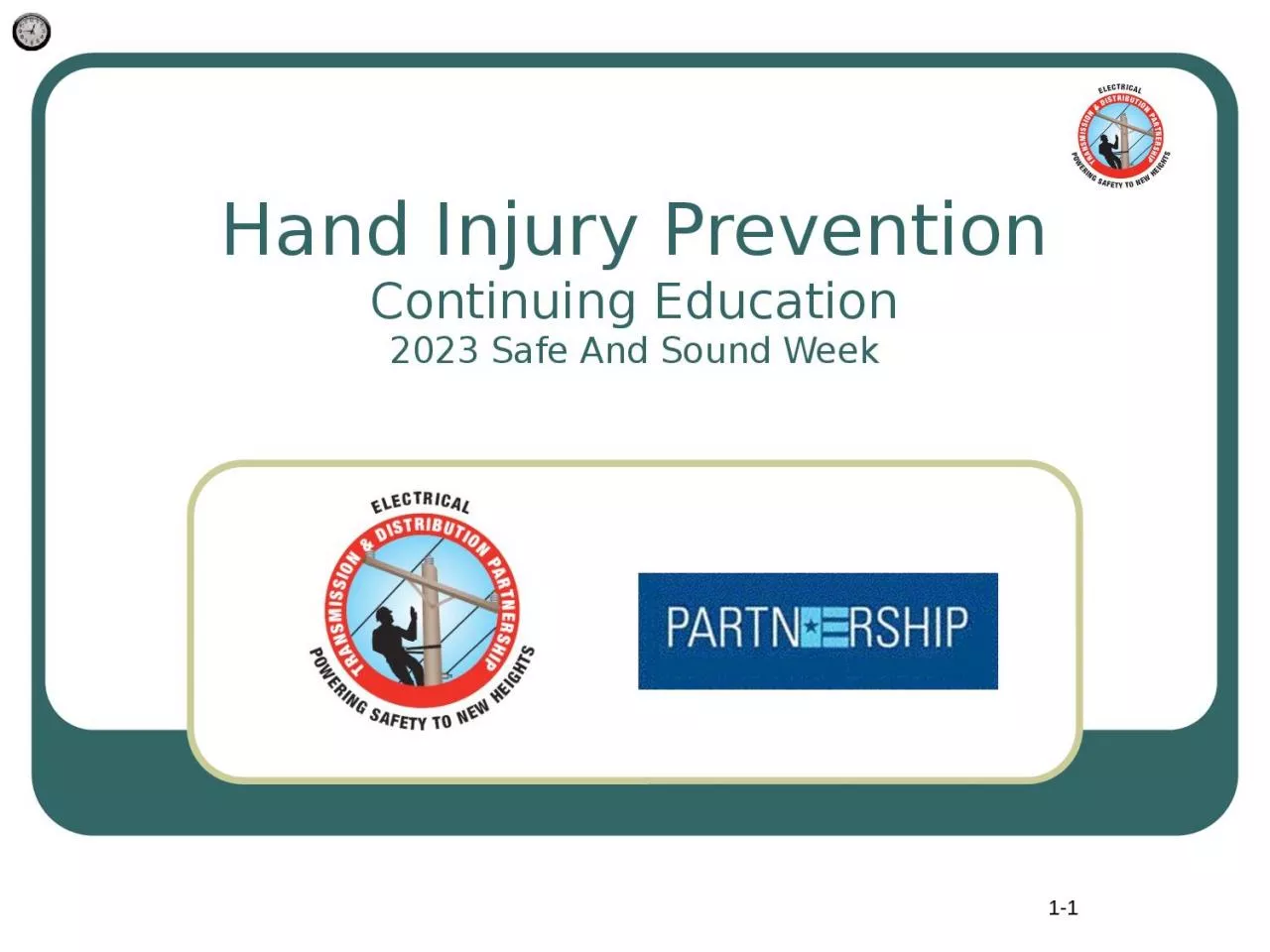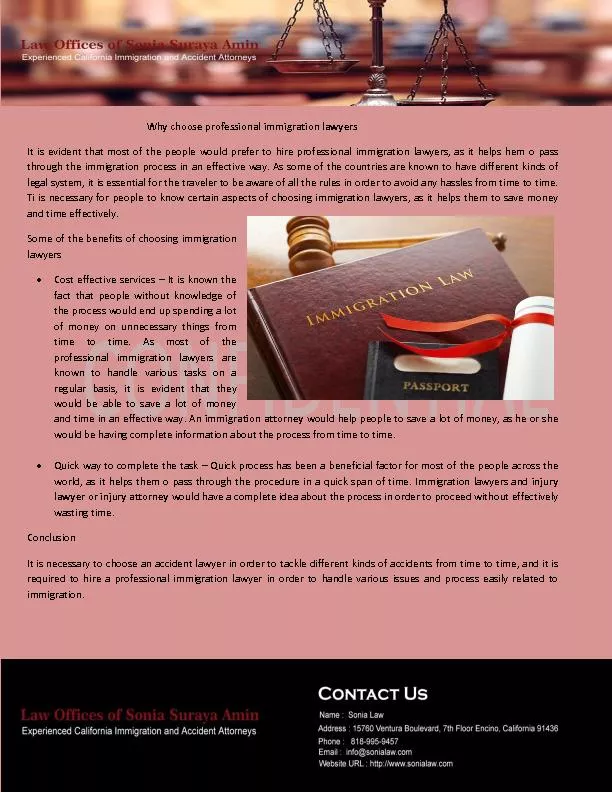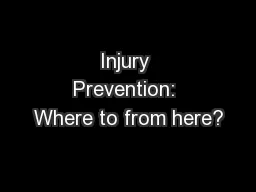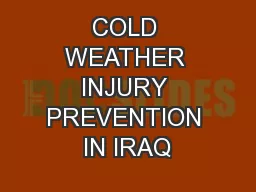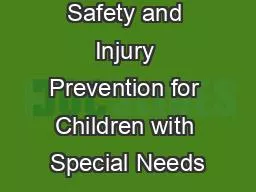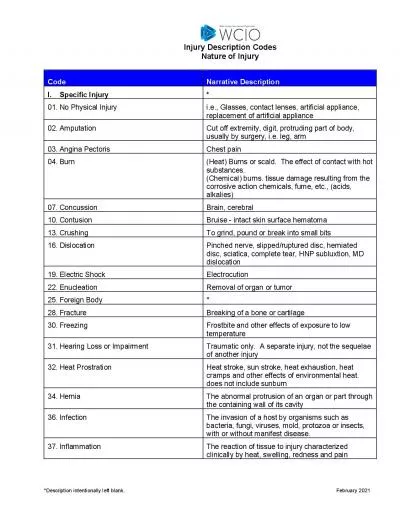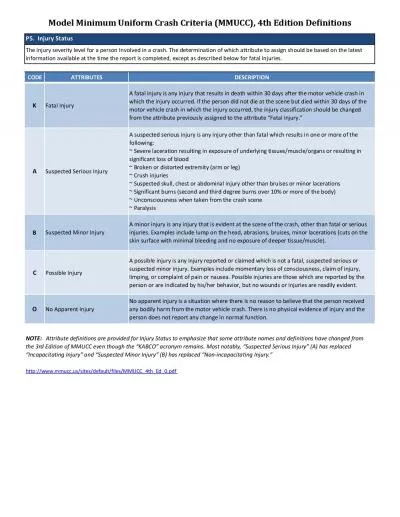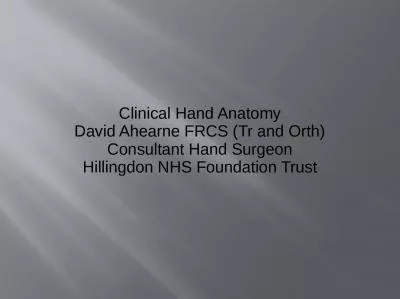PPT-1 -1 Hand Injury Prevention
Author : susan2 | Published Date : 2024-03-13
Continuing Education 2023 Safe And Sound Week Objectives Upon Completion of this module you should be able to Describe the effects of hand injuries Explain employer responsibilities regarding worker
Presentation Embed Code
Download Presentation
Download Presentation The PPT/PDF document "1 -1 Hand Injury Prevention" is the property of its rightful owner. Permission is granted to download and print the materials on this website for personal, non-commercial use only, and to display it on your personal computer provided you do not modify the materials and that you retain all copyright notices contained in the materials. By downloading content from our website, you accept the terms of this agreement.
1 -1 Hand Injury Prevention: Transcript
Download Rules Of Document
"1 -1 Hand Injury Prevention"The content belongs to its owner. You may download and print it for personal use, without modification, and keep all copyright notices. By downloading, you agree to these terms.
Related Documents

